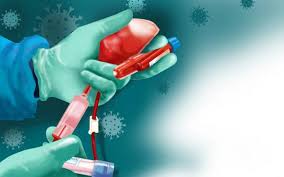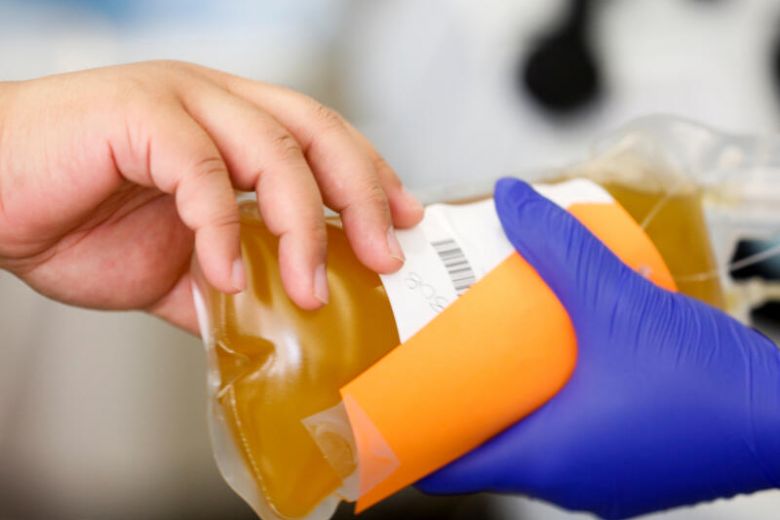Coronavirus: Is Plasma Therapy Safe and Effective?

Last Saturday, on the 22nd, the US FDA urgently approved plasma therapy to treat patients with COVID-19. I believe that soon, many countries and hospitals will begin to collect plasma from COVID-19 cured patients to implement antibody plasma therapy. The decision will broaden use of a treatment that has already been administered to more than 70,000 patients. But the F.D.A. cited benefits for only some patients. And, unlike a new drug, plasma cannot be manufactured in millions of doses; its availability is limited by blood donations. Mr. Trump urged everyone who has recovered from the virus to donate plasma, saying there is a nationwide campaign to collect it.
So what is plasma therapy?
Plasma Therapy is called convalescent plasma therapy also. Plasma therapy, in terms of its working principle, is the infusion of antibody-rich plasma from recovered patients to deal with the virus in the body.
The global outbreak of the new Coronavirus epidemic has been spreading for several months, but there are still no specific drugs to treat patients with new Coronavirus, and the development and launch of vaccines require a relatively long cycle. Therefore, at this stage, plasma therapy will undoubtedly give hope to the new Coronavirus treatment, and plasma therapy has proven to be effective.
Here, we don’t know what plasma is. You can google it directly. Let’s talk about the effects and limitations of plasma therapy, as well as some questions about plasma extraction.
Any Limitation of Plasma Therapy?

- Disposable Medical Face Masks with Elastic Ear Loop 3 Ply Breathable and Comfortable
- Disposal Protective Clothing for Medical Use
- N95/KN95 Protective Mask with Elastic Ear Loop
- Surgical Mask with Elastic Ear Loop 3 Ply Breathable and Comfortable
- ZeroVirus Space Portable Sterilization Bar
First, we have keep in mind that Plasma therapy is not a panacea, there are risks and limitations.
- Plasma contains a variety of proteins, which may cause adverse reactions; there may be viruses in plasma, which can cause serious consequences
The macromolecular proteins or cytokines in the plasma may cause severe allergic reactions (hypotension, anaphylactic shock, etc.), leading to blood transfusion-related lung damage (which makes the new crown virus pneumonia worse). Plasma may contain hepatitis B virus, hepatitis C virus, HIV virus, syphilis, etc. Infusion of these plasma may cause infections, such as hepatitis B and AIDS.
- Blood type problem
Although blood cell-free plasma is transfused, blood type A blood plasma contains anti-B antibodies and cannot be used for type B patients; type B plasma contains anti-A antibodies and cannot be used for type A patients. Type O plasma It contains anti-A and anti-B antibodies and can only be used for type O blood; type AB plasma does not contain anti-A or anti-B antibodies and can be used by everyone.
- Not All COVID-19 patient Are good for Plasma Therapy.
Plasma therapy is not suitable for end-stage critically ill patients with irreversible multiple organ failure. Even so, plasma therapy is still an important option for most patients with new coronavirus disease, and the risks are far less than the benefits.
- Need enough plasma source.
The plasma suitable for treatment must be the plasma of the recovered patients, and at the same time, enough recovered patients are required to provide plasma. This is also a very serious problem. At present, there are already a sufficient number of recovered patients, so enough plasma donors are needed. After all, there are hundreds of thousands of newly diagnosed patients every day.
Is Plasma Therapy Safe?
As said above, the risks are far less than the benefits for Plasma Therapy. And many actual cases have proved the safety of plasma therapy. The Mayo Clinic released data in June that showed plasma treatment was safe following transfusion in a group of 20,000 patients, which included substantial enrollment from Black and Latino patients.
And meanwhile, a study released Aug. 13 — but not yet peer-reviewed — suggested that using convalescent plasma to treat patients with severe Covid-19 soon after their diagnosis was associated with a lower likelihood of death. But the study had serious scientific limitations that make interpreting the findings difficult.
Everyone can donate life-saving plasma?

This is obviously not possible. The life-saving plasma that can be used to treat the new crown virus can only be the plasma for the recovery period of new crown pneumonia patients, and the following conditions must be met:
- Age 18+, preferably no more than 55 years old
- Men should weigh no less than 50 kg
- Women better not weigh less than 45 kg
- No history of blood diseases and blood-borne diseases
According to research statistics, the amount of plasma donated by a recovered patient is usually about 400ml, while the amount used by a critically ill patient is 100-200ml. The plasma donated by a survivor can be used for the treatment of 2-3 patients on average.
Will donating plasma harm the body?
In fact, plasma donation is not whole blood donation, and plasma donation causes very little damage to the body. It uses apheresis plasma technology, only the plasma is separated, and the red blood cells, platelets and other components will be returned to the human body. So the recovery time will be faster. Generally, the human body can replenish and recover on its own in about a week.
Conclusion
In the absence of a better treatment, antibody-enriched plasma therapy will be a safer and more effective option, even with some limitations. There are still 200,000 new patients and tens of thousands of deaths worldwide every day. Therefore, an active and effective treatment must be adopted before the vaccine is produced.
And now, plasma therapy have been taken to treat COVID-19 patient in many countries, India, Russia, China, USA and etc.
In addition, plasma therapy is only a treatment for patients who have been infected with the new coronavirus. Countries still need to take better measures to slow down and control the spread of the new coronavirus and reduce the emergence of more patients.
